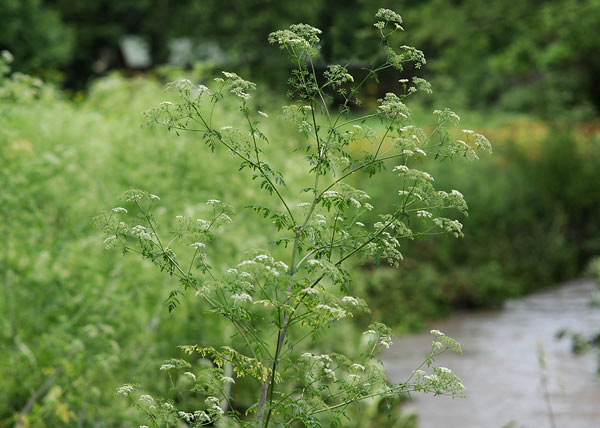
July 14, 2010
| Classification Hierarchy | |
| Kingdom | Plantae |
| Subkingdom | Tracheophyta |
| Superdivision | Spermatophyta |
| Division | Magnoliophyta |
| Class | Magnoliopsida |
| Subclass | Rosidae |
| Order | Apiales |
| Family | Apiaceae |
| Genus | Conium |
| Species | Conium maculatum |

July 14, 2010
Scientific Name: Conium maculatum
Conium (Gr.) hemlock; maculatum (Lat.) mottled, spotted
Common Name: poison hemlock
Origin: Alien (Europe, Mediterranean regions)
Habitat: moist areas, often along railroad tracks and river banks, waste places.
Notes: Poison hemlock is abundant and very toxic. No part of this plant should be eaten! Even small amounts have been lethal for livestock and humans. The neurotoxin
coniine is present throughout the plant in amounts that vary according to geographical location, anatomical structure, and developmental stage.
Additional references: 1, 2,
3, 4, 5, 6, 7, 8, 9, 10, 11.
Flowers; June, small, white, in compound umbels.
Leaves; fern-like, bipinnate, lower leaves are long petioled.
Stems; smooth or grooved, hollow, purple or green with purple blotches. plants usually 1 to 3 meters tall.
Glossary: Botanical Terms
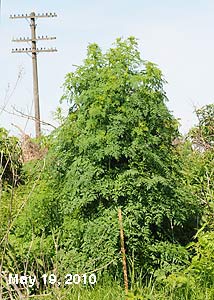
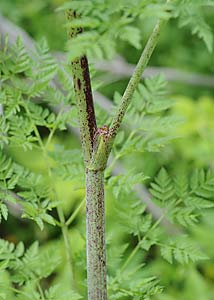

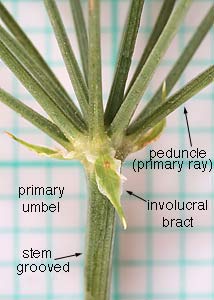

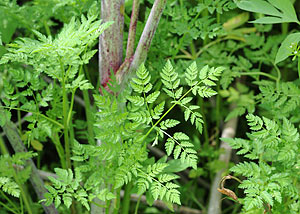

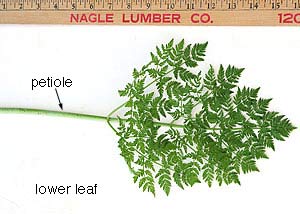
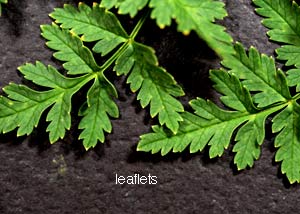
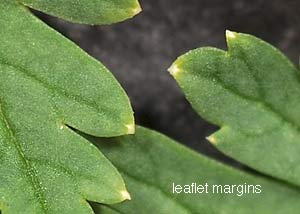
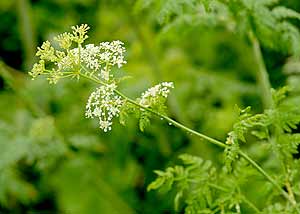
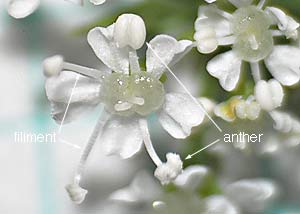

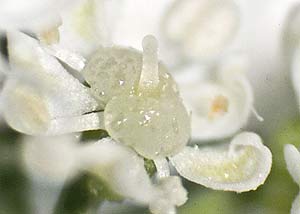
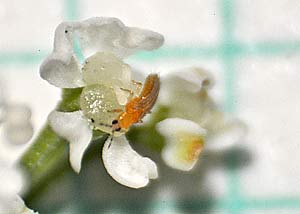
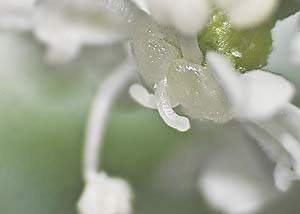

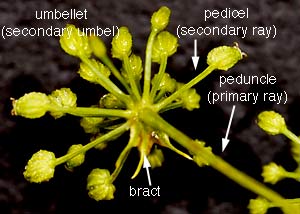
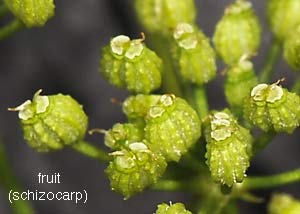
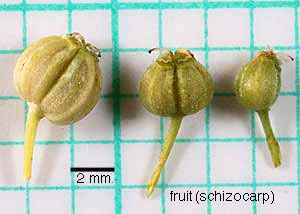
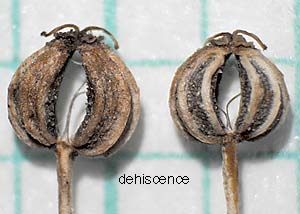

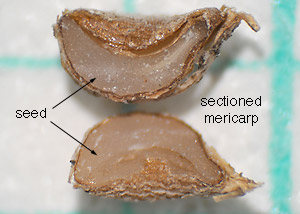
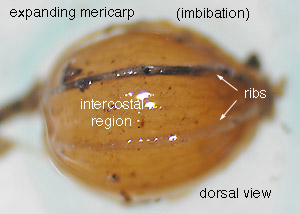
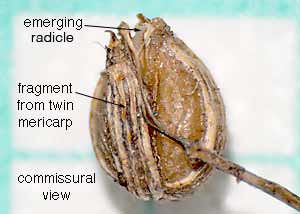
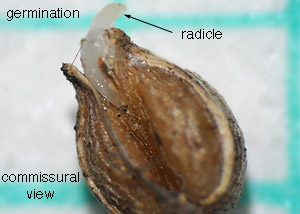
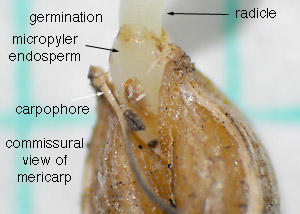
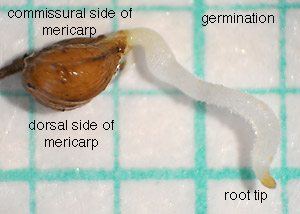
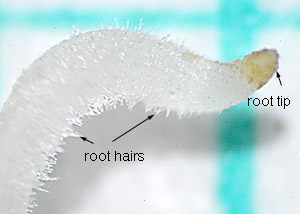

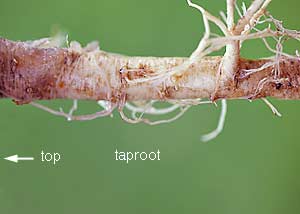

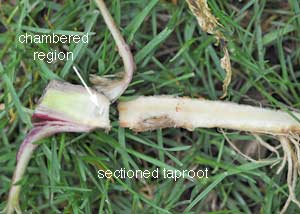
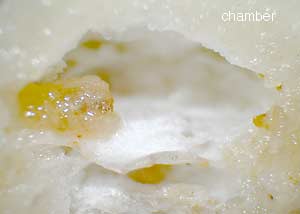
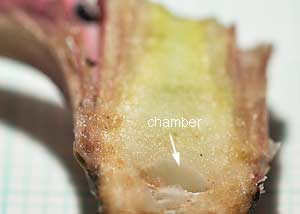
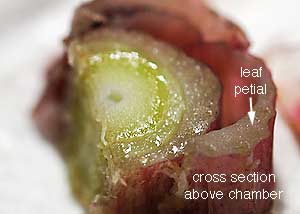
Comments: Poison hemlock(Conium maculatum) carries a caution in its common name, it is poison, don't eat it! There are reports of children being poisoned because they used the hollow stems as straws, pea shooters, or whistles. Livestock and humans have been poisoned (often fatally) by eating even small amounts. Most famously, this is believed to be the plant used after the trial of Socrates in 399 BC. Conium has also been reported to cause dermal irritation (see reference #10 above) so if you are working with it outdoors, it would be sensible to wear long sleeves and long pants and even gloves. If you crush the leaves barehanded to detect the musty odor, it is a good idea to wash your hands soon after. Plants that produce toxic substances often have special structural features to sequester the toxins. Such is the case with Conium which has secretory channels or "oil tubes" in the seeds (and probably elsewhere) that are best seen, on prepared slides, with a microscope.
The presence or absence of "oil tubes" is sometimes used as a characteristic in taxonomic keys. Presumably the toxin reduces herbivory and the channels facilitate distribution of the toxin and perhaps prevent the toxin from effecting sensitive plant cells (autotoxicity). Fewer kinds and numbers of insects have been reported on Conium plants (see reference #6 above) compared to most other plants.
At least three different species are called hemlock. One is a conifer (genus Tsuga) which is not considered poisonous. So why is it called hemlock? One explanation describes the odor of its crushed leaves as similar to that of Conium maculatum. The other two species are often called the most toxic plants in the United States, one is Conium maculatum (poison hemlock) and the other is, (Cicuta maculata) (spotted water hemlock) both of these are umbel bearing members of the carrot/parsley (Apiaceae) family. Incidentally, Conium and Cicuta are the Greek and Latin word for hemlock, respectively. The plant we now call Conium was once called Cicuta. The history of the nomenclature is interesting. The plant we now call Conium maculatum is native to Europe and the Mediterranean region. It was introduced to the Americas probably circa 1800. The plant we now call Cicuta maculata is native to North America and does not grow in Greece or southern Europe. This, plus the description of the symptoms of Socrates' poisoning make the plant we now call Conium maculatum the probable cause of his death.
The two species (Conium maculatum and Cicuta maculata) have several features in common. For example; both produce umbels of small five-petaled white flowers with obvious stylopodiums (nectaries), both have purple or purple mottled stems, and both have compound leaves. However, there are some convenient ways to tell them apart. Water hemlock (Cicuta) is usually found in a wetter environment and it is usually a smaller plant and a later bloomer than poison hemlock (Conium). Involucral bracts are absent below the primary umbel in water hemlock but are present in poison hemlock. Both species have bracts (involucel) below the secondary umbel (umbellet). Water hemlock has prominent calyx teeth (reduced sepals) visible on the flower and the developing fruit, poison hemlock does not. One of the best clues is in the veination of the leaflets. The veins in water hemlock appear to terminate at the notch between the teeth on the leaflet. On poison hemlock and most other plants the veins terminate at the teeth. The roots of water hemlock tend to be a fascicle (bundle) of yellowish finger sized tubers. Poison hemlock has a white tap root.
Pharmacognosy is the study of medicines derived from Natural sources. Practitioners of this discipline are the people who search for and find biologically active ingredients in organisms of all sorts, but especially from plants, and from all around the world. The discipline seems to have broadened (a sort of mission creep) to include any chemical activity that can result from the study of natural products. Understandably, this group is a strong advocate and defender of bio-diversity. On their behalf, you might resolve not to destroy plants (toxic or otherwise) unless they are becoming invasive or in some other way destructive. After all, any plant with unusual properties may one day--probably with the help of a pharmacognosist--provide a valuable medical or commercial product.